Abstract
The survey was conducted in 3 out of the 18 administrative regions (aimaks); 4345 people aged > or = 40 years were examined, which represented 95.7% of the proposed sample. The prevalences of blindness and low vision in the sample were 1.5% (95% CI, 0.8-2.3%) and 8.1% (95% CI, 5.5-10.7%), respectively, from which the prevalences of blindness and low vision in the Mongolian population aged 40 years and older were estimated to be 1.4% and 7.7%, respectively. The prevalence of climatic droplet keratopathy was high (ranging from 15% to 50%) in this population, which included a large number of semi-nomadic cattle breeders, and was responsible for 7.2% of the blindness and 19.3% of the low vision. Cataract and glaucoma were the commonest blinding disorders, each accounting for around 35% of the blindness. Trauma accounts for a high proportion of those monocularly blind. Trachoma and xerophthalmia were not found.
Full text
PDF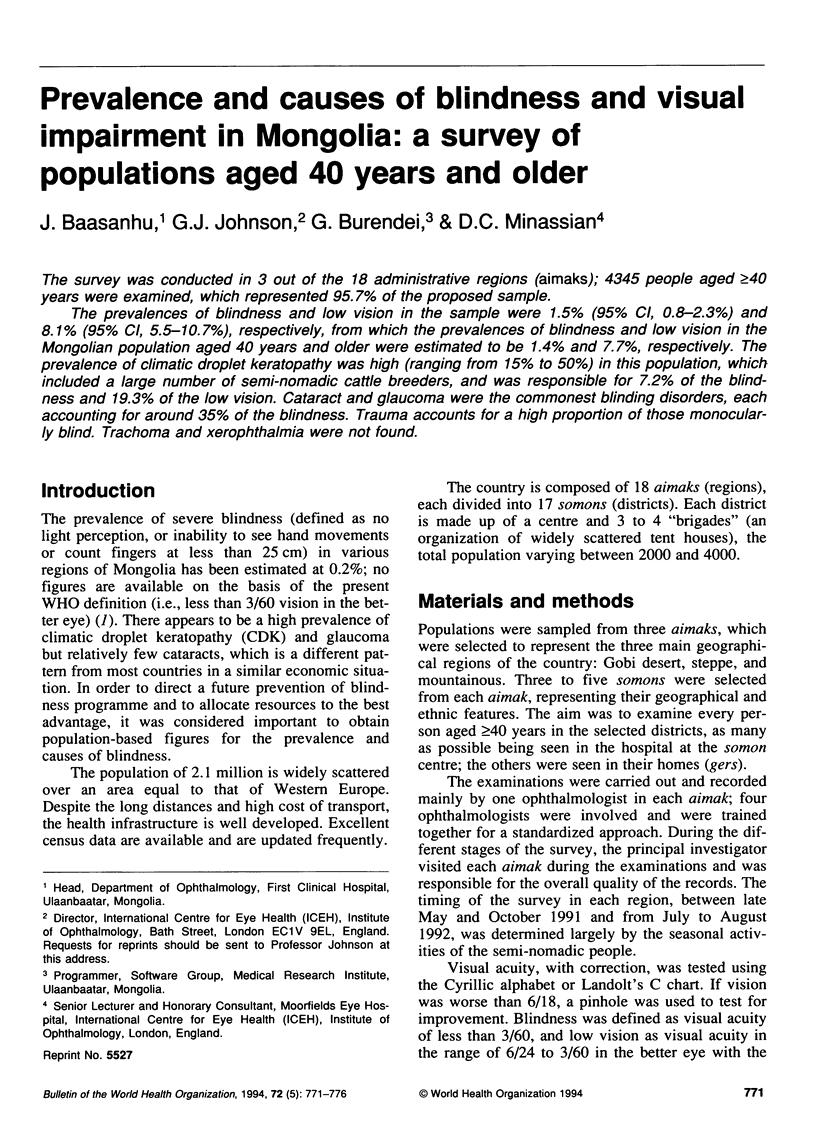
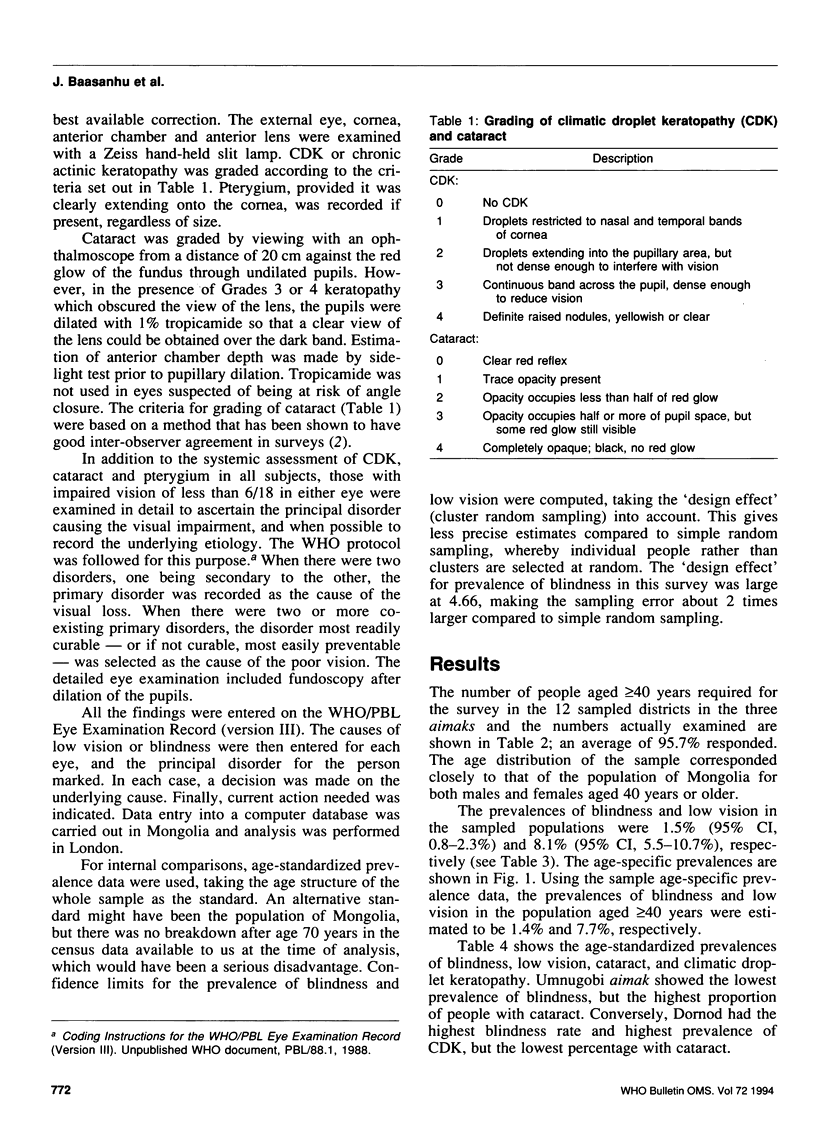
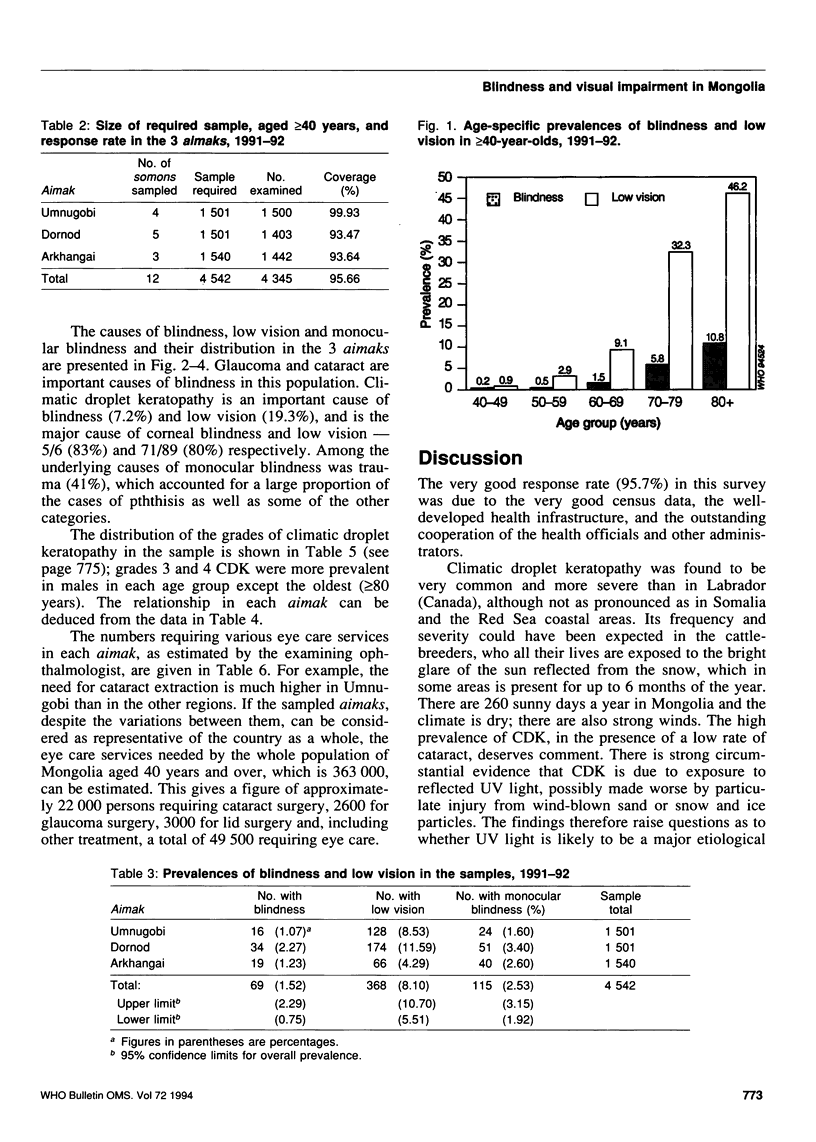
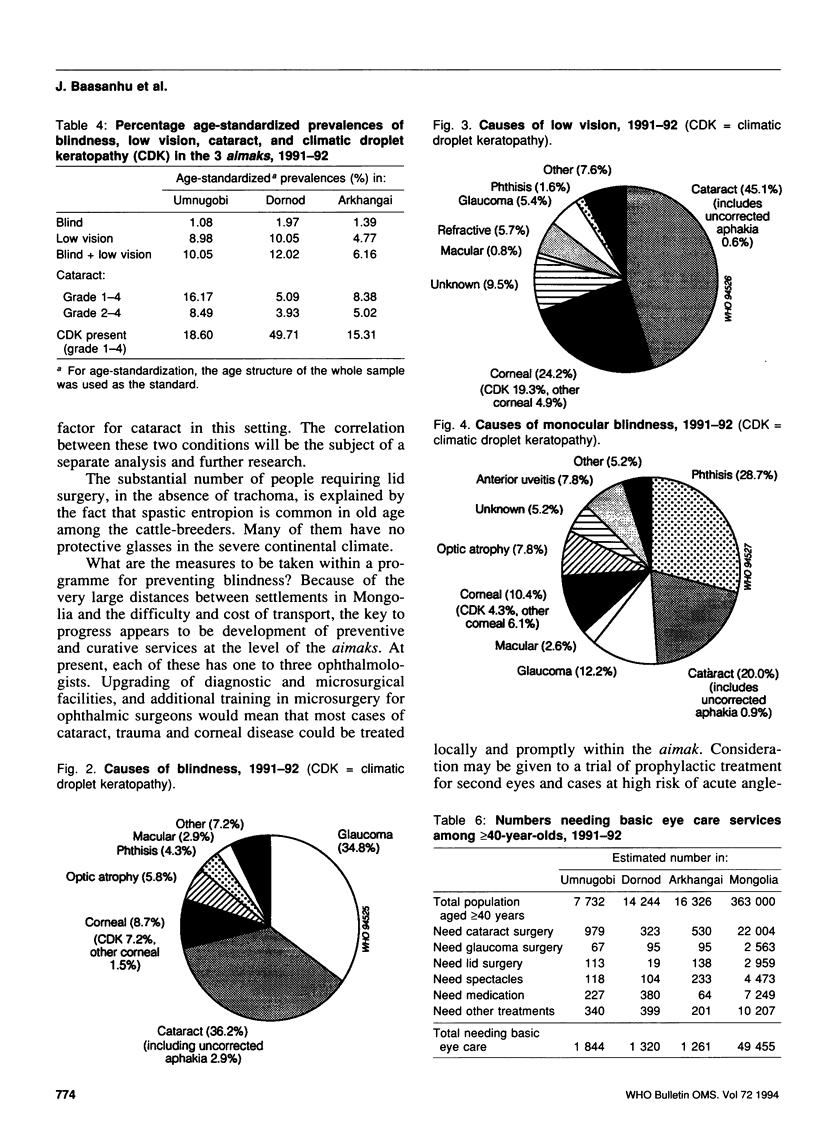
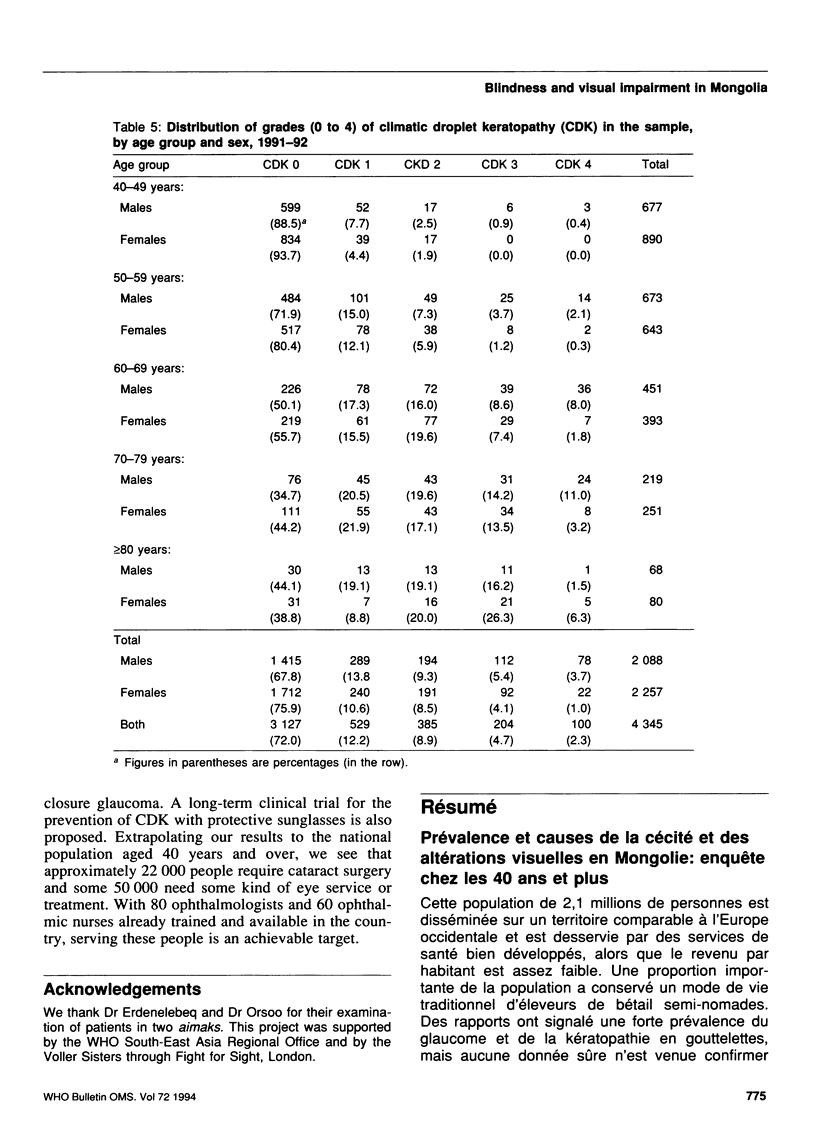
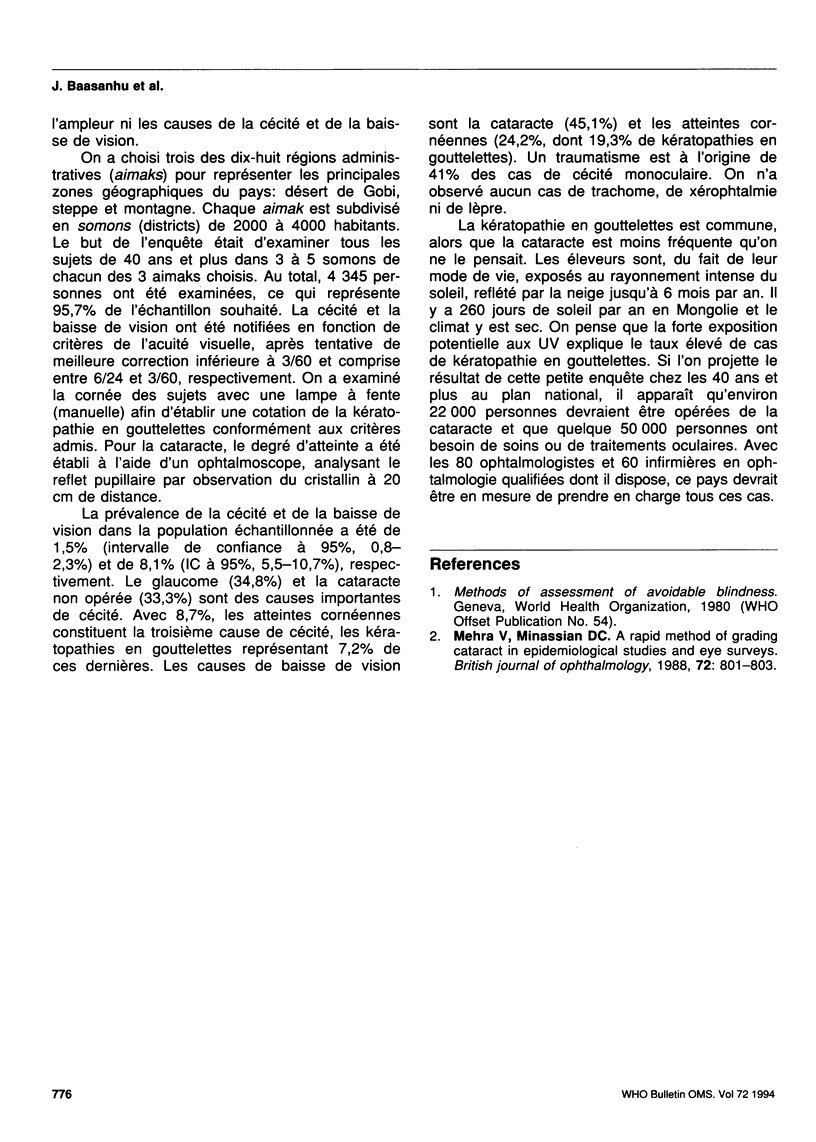
Selected References
These references are in PubMed. This may not be the complete list of references from this article.
- Mehra V., Minassian D. C. A rapid method of grading cataract in epidemiological studies and eye surveys. Br J Ophthalmol. 1988 Nov;72(11):801–803. doi: 10.1136/bjo.72.11.801. [DOI] [PMC free article] [PubMed] [Google Scholar]


